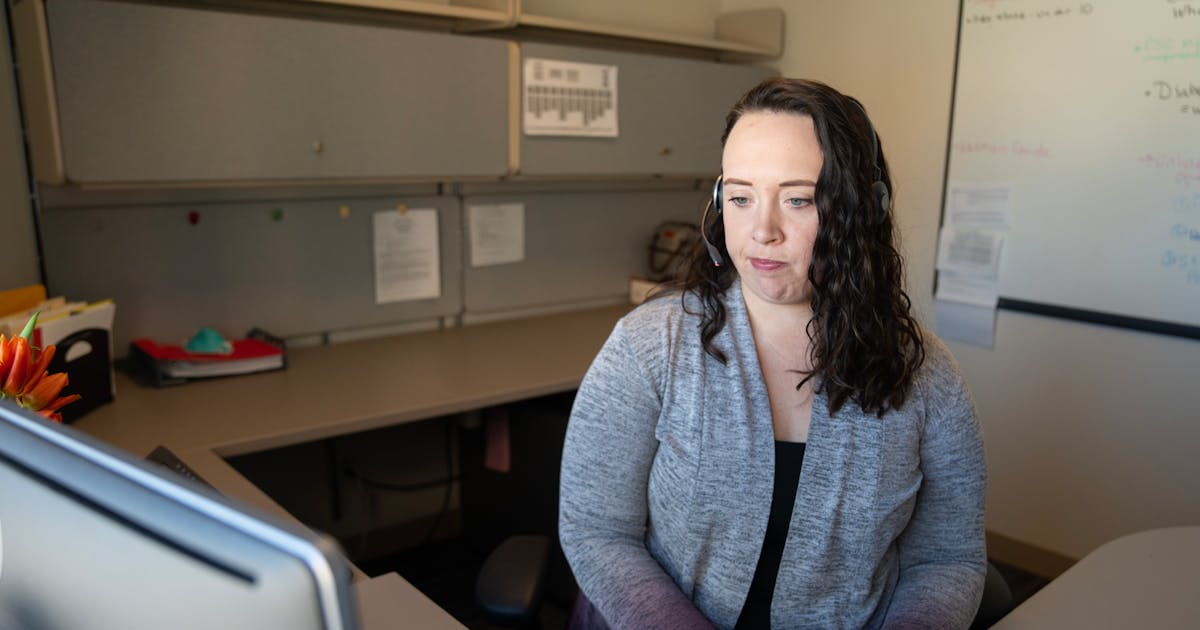Minnesota’s ‘archaic’ technology wastes critical caseworker time, counties say
Minnesota's 'archaic' technology wastes critical caseworker time, counties say Star Tribune


Minnesota County Workers and Lawmakers Seek to Update Outdated Information System

Minnesota county workers and lawmakers have some choice words to describe the state’s 25-year-old information system used to manage child protection cases and social service programs: Slow. Archaic. A nightmare.
“It’s the most vulnerable people that we have in the state of Minnesota that are in this system,” Pine County Commissioner Terry Lovgren said. “They need the most care; they need the most help, and we can’t give it to them because we are working on a broken system.”
Gov. Tim Walz recently proposed spending $15 million to update the Social Services Information System (SSIS). It was one of the biggest expenditures in his supplemental budget plan.
County officials say more efficient technology could save child protection workers, who are in high demand and short supply, hours every week, allowing them to spend more time with children and families. And lawmakers and advocates stressed that without a technology update, some other efforts at the Capitol to improve child welfare must remain on hold.
But the money that Walz has proposed is only a portion of the estimated $80 million to $100 million needed to entirely replace SSIS.
Half of that money could come from a federal government match, said Tikki Brown, assistant commissioner for children and family services at the Department of Human Services (DHS). In 2023, lawmakers devoted $2 million to analyze SSIS issues and study what a new system would entail, she said. Brown said a report will be issued in the fall.
If lawmakers approve the $15 million, Brown said, the funding would allow the state to start building a framework for a replacement system and help “stabilize” the existing one to prevent what have become frequent crashes.
The system will shut down for hours, or even crash for a full day, county and state officials said. County and tribal government workers lose what they had been writing because the technology often doesn’t automatically save their work. Nothing can be copied and pasted, so staff must laboriously enter the same information again and again. The “spinning wheel of death” is a familiar sight as screens slowly load.
Modernizing SSIS is complex, DHS officials said, because agencies use the system to manage many types of services.
It is primarily used for child welfare information, such as maltreatment reports, out-of-home placement plans and adoption information. However, local agencies also rely on it to administer a multitude of other programs, including adult and child mental health services and waiver programs for the elderly and people with disabilities.
A ‘First Step’ for Child Welfare Changes
The $15 million for SSIS is the only child protection-related spending in Walz’s supplemental budget plan. The governor said he would propose funding to recruit and retain more caseworkers after a 2023 Star Tribune series examined child protection system failures that led to repeat abuse and deaths.
DHS worked with counties to revise Walz’s initial proposal and fund the most pressing needs, Walz spokeswoman Claire Lancaster said. The governor’s supplemental funding plan this year is a limited adjustment to the two-year state budget passed last spring.
“This funding is a first step that will help address immediate needs within the child welfare system — allowing workers to spend less time on IT and more time with kids and families,” Lancaster said. “We plan to revisit the issue in a budget year.”
Lovgren, the Pine County commissioner, estimated that the cumbersome SSIS forces child protection workers to spend about 45 minutes longer than they should have to in entering data about a child. Among the time-consuming problems: Workers must repeatedly type the same parent’s details for every child in a family.
“That’s 45 to 50 minutes that they could be spending with that family and making sure that the children are safe and they are in a good place and the family is OK,” Lovgren said.
startribune.com

Join us, as fellow seekers of change, on a transformative journey at https://sdgtalks.ai/welcome, where you can become a member and actively contribute to shaping a brighter future.







